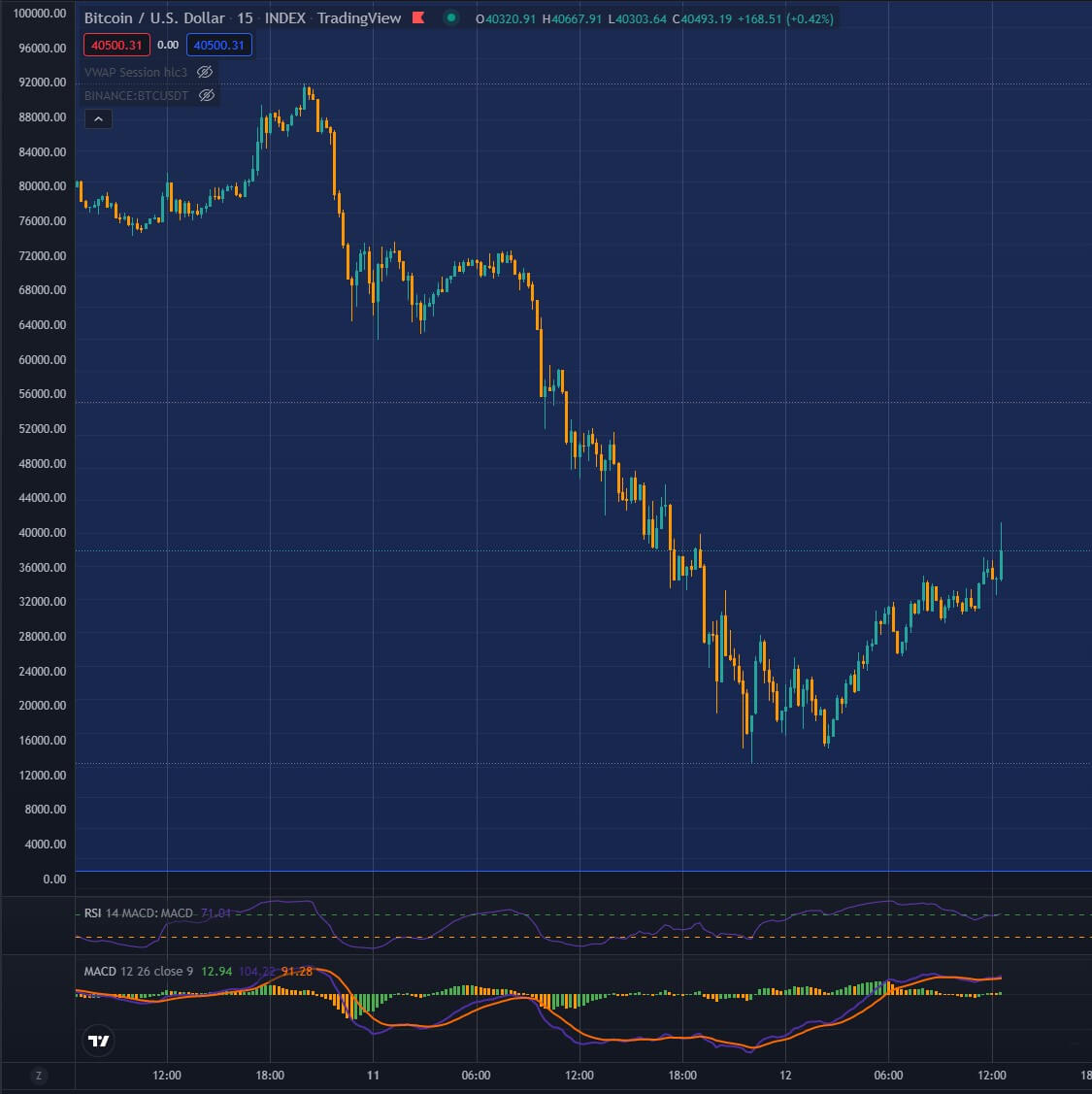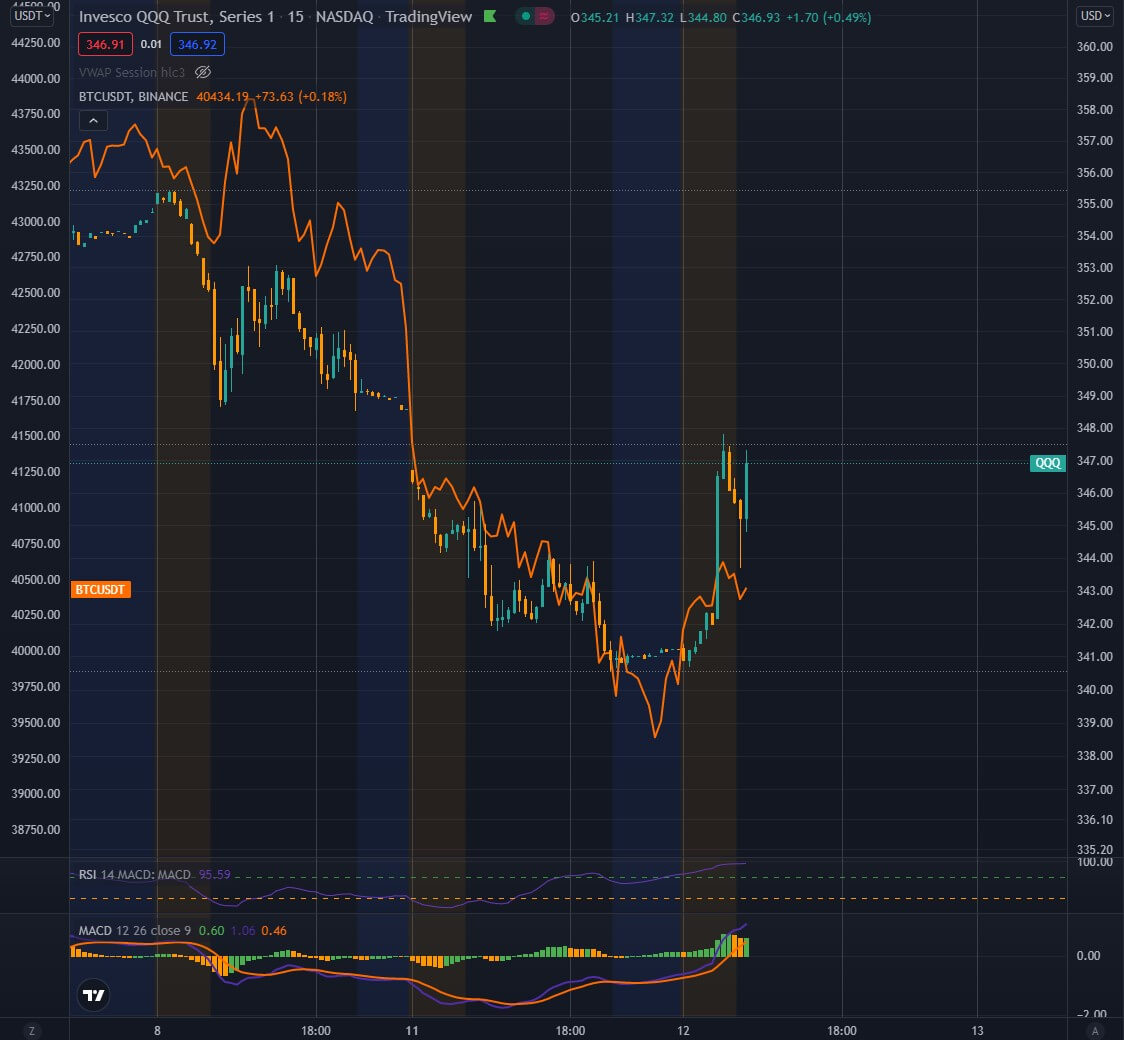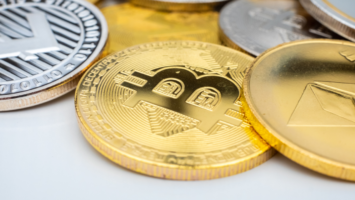The price of Bitcoin rose after March CPI data confirmed that inflation in the U.S. continues to increase, hitting the highest level in 40 years. However, with the price of Bitcoin currently down 11% since January 1 and an inflation reading of 8.5%, the net price change is just 2.5% in real terms.
In addition, the Nasdaq (QQQ) is down 14% since the start of the year, indicating that Bitcoin is acting as an inflation hedge. Inflation in the United States is now at the highest level in 40 years.
The effect on the crypto market
Bitcoin fell over $3,000 on April 11 on rumors that inflation would come in hot. The decline was contradictory to expectations for an asset class considered an inflation hedge.


However, as we know, Bitcoin has tracked tech stocks on shorter timeframes for the past several months. Bitcoin’s price is the orange line in the trading view charts, while the Nasdaq index is represented as bars. The correlation in the days leading up to the CPI data release is evident.


Is Bitcoin an inflation hedge?
Ahead of the CPI release, many believed that inflation data already priced into the market was worse than expected. Moreover, there were fears that inflation could be even higher as the White House suggested the numbers would be “extraordinarily elevated.”
Tomorrow’s bad inflation data could already be priced in after the warning from the White House, that is if it is only like 8.5%. But if it is anything over 9%, then we are probably heading lower as that is worse than the market expects. IMO. #bitcoin #crypto
— Lark Davis (@TheCryptoLark) April 12, 2022
It is unclear how the market will respond to the CIP data in the long term, but in the short term, Bitcoin seems to be outperforming tech while also mirroring its movements in terms of overall sentiment. For example, Nasdaq moved up over 5 points in pre-market trading as the news broke.
The crypto community is taking to Twitter to compare traditional finance savings rates to DeFi and Bitcoin’s baked-in inflation due to its fixed supply. The news caused a slight spike in Bitcoin’s price, pushing it up more than $400 in 30 minutes. However, it has since retraced back below $40,000 as it battles to hold critical psychological support.
If you’re not earning +8.5% on your savings, you are losing money!
Meanwhile, #Bitcoin‘s inflation rate is at 1.7% and cannot be manipulated. https://t.co/nfRiHCxArj
— Josh (@CryptoWorldJosh) April 12, 2022
Sell the rumor, buy the news
MicroStrategy CEO Michael Saylor said “inflation is worse than you think” in the lead up to the CPI release. Equities markets fell into the close on April 11 as traders prepared for the worst.
#Inflation is worse than you think, and #Bitcoin is better than you know.
— Michael Saylor⚡️ (@saylor) April 12, 2022
However, Bitcoin hit a local bottom around 9 pm EST, hitting just about $39,000, before climbing throughout the night. These events have led to a rare sell the rumor buy the news event as it appears the markets were bracing themselves for inflation to come in even higher than the 8.5%.
Core CPI data suggests that inflation is only up 0.5%, with traditional finance analysts such as Andrew Hunter of Capital Economics believing the “big news in the March report was that core price pressures finally appear to be moderating.”
Core CPI data removes food and energy from the equation, which could be considered anti-consumer since these are arguably the things that incur the highest costs for ordinary people. Consequently, food and energy are also where inflation has hit the hardest.
8.5% inflation… There is no such thing as “cost-push inflation”.
All prices do not rise with the same quantity of money.
If one price soars and money quantity is the same, others fall.
Only massive money creation above real demand can lead to almost all prices rising. pic.twitter.com/W6BbDiTmjU
— Daniel Lacalle (@dlacalle_IA) April 12, 2022
























Comments (No)